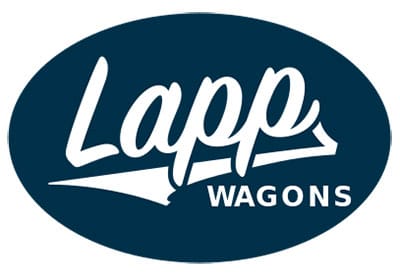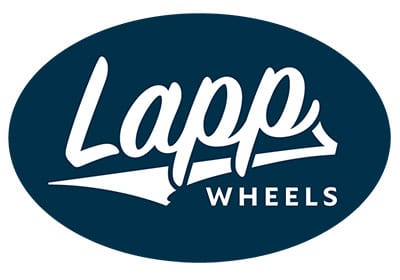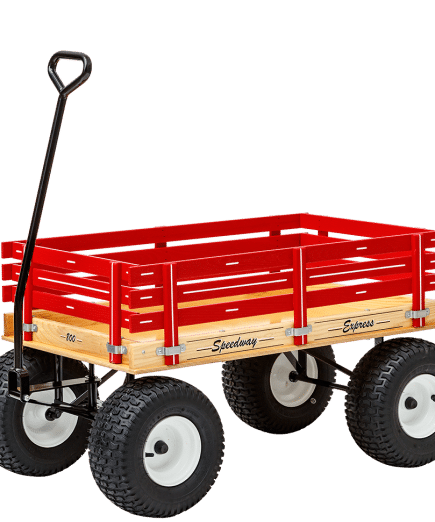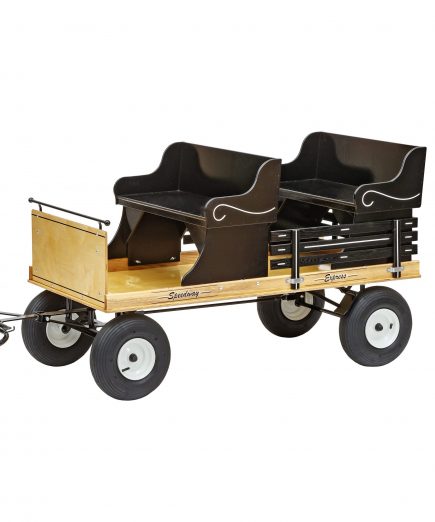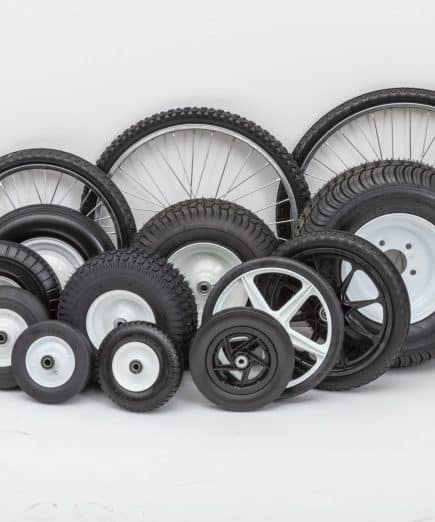Blog
What is a Wheel Hub?
Table of Contents
Can you confidently answer the question “What is a wheel hub”? We use wheel hubs every day, but usually don’t even think about them or what they do for us. Let’s get a better understanding of what a wheel hub is!
You’re outside on a beautiful summer day. The sun is shining down on you as you watch your children enjoying their new pony wagon. The pony cart rolls smoothly along the trail back to the picnic spot you fixed up in the woods of your property. You follow along pulling a wagon loaded with food while another child follows on his favorite tricycle.
You arrive at the picnic spot that you worked hard to clear out and clean up. You used your pick-up truck and trailer to haul out branches and brush and haul in wood chips to cover the ground with. You couldn’t have finished the job without the help of your trusty wheelbarrow that made transporting the wood chips so much easier.
You sit down on your lawn chair to enjoy your evening in the outdoors and one of your children runs over to you and asks, “What is that?” and points at the center of the wheel of the pony cart.
You find yourself grasping for words and explanations to give your child because you’ve never once thought about what all it took to create the experience you’re enjoying today. You realize that you relied on your truck, trailer, wheelbarrow, pony cart, wagon, and tricycle to get you where you are without knowing what each component of their construction actually did for you.
You know that the center of the wheel is called the “hub,” but what is a wheel hub exactly?
While there are so many different pieces that make up each of these tools, a small bit that often goes overlooked is the hub of your wheels. These small pieces are literally what makes the world go round– if you consider your wheelbarrow a world within itself.
Without even thinking about it, we rely on wheel hubs every day. Whether it’s to safely get us to work in our car or to efficiently carry supplies in a work wagon, the hubs of our vehicles’ wheels provide us with strength that we never think about or fully appreciate. Many of us couldn’t even answer the question “What is a wheel hub?” if someone would ask us. Let’s find out what a wheel hub is and get a good answer prepared for when someone asks us, so we don’t end up with that confused look on our faces as we try to explain the few facts we know.
Wheel Hub Functions

Although it’s a small piece, the hub of a wheel is a crucial component of the whole vehicle. They provide a smooth wheel rotation while supporting a lot of the weight of the vehicle. Located at the center of the wheel, the hub is what connects the wheel to the axel or suspension system of the vehicle or cart. Wheel hubs include wheel bearings that cause the wheel to rotate with as little friction as possible.
The function of a wheel hub depends on the type of vehicle or wagon you’re using. However, no matter the type of wheel, the hub always provides support to the wheels where it is attached to the axle. The hub bears a majority of the weight of what’s in your vehicle and distributes the weight evenly throughout the rest of the wheels for a stable and balanced ride.
A wheel hub also enables the wheel to move smoothly and move the vehicle in the direction you want it to go. For more complex wheel systems, the brake rotor will be mounted to the wheel hub. This setup helps slow down or stop the entire vehicle by creating friction when the calipers and brake pads clamp down onto the brake rotor.
On vehicles, the wheel hub will be connected to the anti-lock braking system (ABS) and the traction control system (TCS). Besides containing wheel bearings, a wheel hub on a vehicle also has a wheel speed sensor that tracks how fast each wheel is turning and relays that information to the ABS control system. This helps the ABS decide if anti-lock braking is needed in aggressive braking situations.
Although all wheels have hubs, not all are fully outfitted with all these features. Your yard wagon or pony wagon will only be equipped with the basics. The hub of your wagon will securely connect your wheel to the axle and will be equipped with bearings to create a smooth tire rotation.
Assembly Of A Wheel Hub
The are a variety of different kinds of wheels and with those different kinds of wheels come different wheel hub assemblies. With most wheels you’ll find the following components:
Wheel Hub
The hub’s main responsibility is securely connecting the wheel to the axel while housing the wheel bearings. Generally, this piece comes in a disc shape with a slightly protruding center section that has several studs. Wear to your wheel hubs come from wheel bearings that fail, making your vehicle extremely difficult to handle.
Wheel Studs
These pieces are essential parts of the wheel hub assembly. The wheel studs are what connect the wheel to the wheel hub assembly. Overtop of the wheel studs are the brake rotor and wheel with lug nuts securely holding the wheel in place.
Wheel Bearing
Wheel bearings are essential to the wheel hub assembly as they are what makes the wheel spin. A wheel bearing consists of a metal ring with steel balls or some rolling element, an inner and outer ring, a bearing cage, a bearing seal, and a retainer. Altogether these parts fit into the wheel hub and connect to the wheel to allow the wheel to rotate. Although this is a very small part of the wheel hub assembly, if the wheel bearing goes bad, the rest of your wheel is in trouble. Because the wheel bearing is a small part that sees a lot of force, it is the part of the wheel that is most prone to requiring replacement.
Oil Seal
This is a rubber seal that keeps dirt, water, and other debris out of the wheel bearing. While keeping the bad stuff out, an oil seal also keeps the good stuff– lubricating grease– in the bearing assembly. This keeps the bearing from going bad prematurely.
Dust Cap
On the outer edge of the bearing assembly, there is a hole in the wheel hub assembly. This poses a problem dirt and other harmful things can get in and the needed grease can find its way out of the opening. A dust cap is an easy solution to add use time to your wheel hub assembly.
This is not an exhaustive list of what wheel hub assemblies contain. For wheel hub assemblies, you’ll have the addition of sensors that track the rate that your wheels are spinning and more complex technology to provide the vehicle’s system with the information it needs to keep you safe. For simple wheel hub systems, there might be these components, but on a more basic and straightforward scale.
With different types of wheels come different questions about how they work and what differs between them and others. Bike tires have a distinct construction that greatly differs from other tires. How are these designed to provide optimum performance?
How are Bike Wheel Hubs Different than Other Wheels?
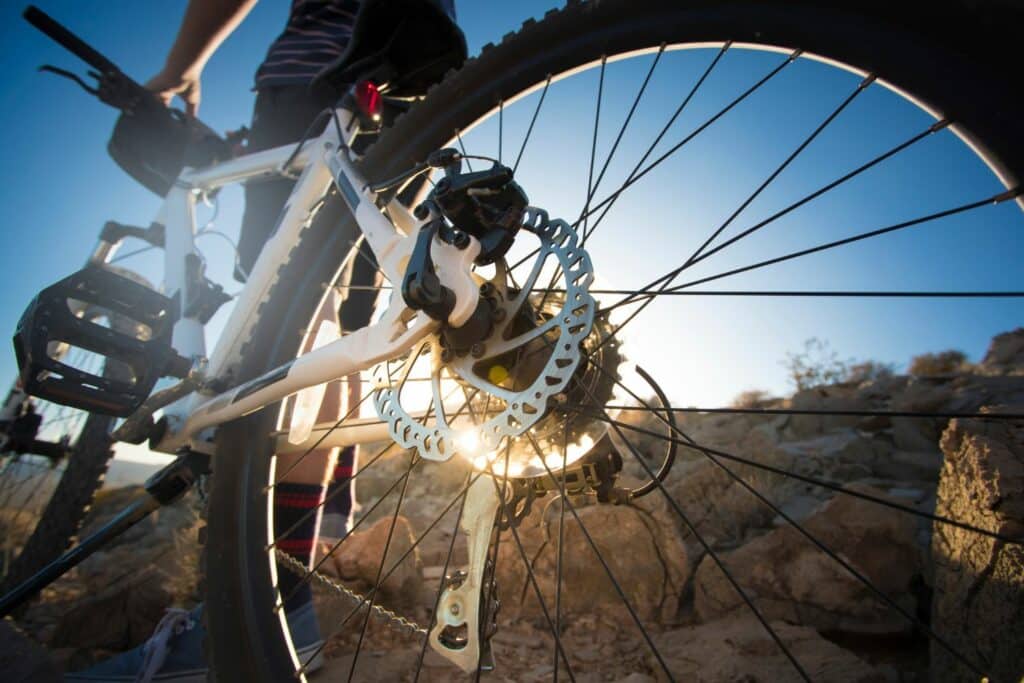
It doesn’t take much to realize that bicycle wheel hubs are quite different than other wheels. One glance at a bike wheel shows you the main difference– the spokes that connect the wheel hub to the tire. Even within the bike, there are differences in hubs. The front wheel hubs are a simpler design while the rear wheel has a more complex design.
Bike Front Wheel Hubs
The Hub Shell or Body
This is the main piece, where the spoke of the wheel is attached and the brake rotor is connected if the bike has front wheel brakes.
Wheel Bearings
The front hubs generally use one wheel bearing on each side. The most common style of modern bike hubs is a sealed cartridge bearing.
End Caps
The end caps are where the hub meets with the fork dropouts to position the wheel into the fork. These pieces are interchangeable to easily switch a hub to different axel standards.
Bearing Sleeve or Axel
This is a sleeve that goes in between the two hubs bearing on either side of the wheel. It helps support the bearings and connect with the fork axel. The end caps are usually connected to the bearing sleeve.
Bike Rear Wheel Hubs
Rear hubs are where it gets a bit more intricate. The rear wheel has to do all the same things that the front has to do with the addition of transmitting torque from the cranks, where the power is produced, to the rear wheel. The rear wheel hubs also have to allow the wheel to coast without turning the cranks for downhill segments. To equip your bike for these extra responsibilities, the rear wheel hubs have all the same components as the front wheel with the additions of:
Freehub Body
This is the part of the hub where the drivetrain’s cassette is attached. It contains several extra bearings compared to the front hub, which allows it to spin independently of the hub shell. It also connects to the hub shell with a ratchet mechanism to transfer the power to the cassette.
Ratchet Mechanism
This device lets the freehub body spin on its own in one direction when coasting. It also locks together with the freehub body to transfer torque when the freehub body is trying to turn faster than the hub shell.
While there are many other components and factors that go into the bike wheel, this is a brief overview of what pieces make up the hubs of bikes. Many of the same basic wheel hub parts are incorporated into bike wheel hubs with the addition of special features to make a bike function as it’s intended to.
Are Wheel Hubs Important?
Yes! Hubs are essential to any vehicle, wagon, bike, or any other wheeled contraption. Just as the sun is the center of our solar system and is essential for our existence, the hub is the center of the wheel and is essential to the wheel functioning as it should.
For vehicles, the wheel hub is needed to keep your wheels moving fluidly and make the steering of your car safer and easier. Bike hubs can completely change the performance of your bicycle. The faster the hubs work, the faster the bike goes. The reverse is also true. If your wheel hubs are slow due to excess debris in the bearing, your bike will move slowly and keep you back when racing.
In order for your vehicle, bike, or wagon to function properly, you need to have wheel hubs that are in tip-top shape. Make sure you do all you can to keep dirt, moisture, and other debris from building up within your wheel hubs.
Got a Damaged Wheel Hub?
Life happens and sometimes damage is inevitable. No matter how carefully you take care of your wheels when you are out and about things happen that you don’t have control over. The main causes of wheel hub damage are impacts, debris, and misalignment.
Cause of Damage to Wheel Hubs
It’s easy for wheel hubs to get damaged from going over rough terrain and being used in rain or snow. If you hit a big bump in the road, the wheel bearing can break or become weaker which will inevitably lead to the bearing failing completely. Keeping your vehicle or wagon stored inside a building is a good way to ensure that it’s not exposed to excess moisture and debris that causes damage. If your wheels aren’t aligned properly, your vehicle will always pull to one side which causes a constant need to turn slightly to keep the car moving straight. This makes the bearing take on extra stress and makes the bearing wear down faster.
Symptoms of Damaged Wheel Hubs
If you hear a grinding or rumbling noise, chances are that you have a bad wheel bearing on your hands. Another symptom is a shaking feeling when steering. If the wheel you dealing with is equipped with a rotor and brake pads, check if there is uneven wear on them. If there is uneven wear, you have a good sign that the wheel bearings are bad.
Replacing a Damaged Wheel
While you can prevent a lot of damage to your wheels, repair, and replacement will eventually become necessary. You can change the wheel bearings on a vehicle, but for something small like a pony cart and wagon, a new wheel is the way to go. Lapp Wagons offers you high-quality replacement wheels for numerous wheeled carts, wagons, and more. You’ll be so happy with your replacement wheels that you won’t care that your wheels gave out in the first place!
Now What’s Your Answer?
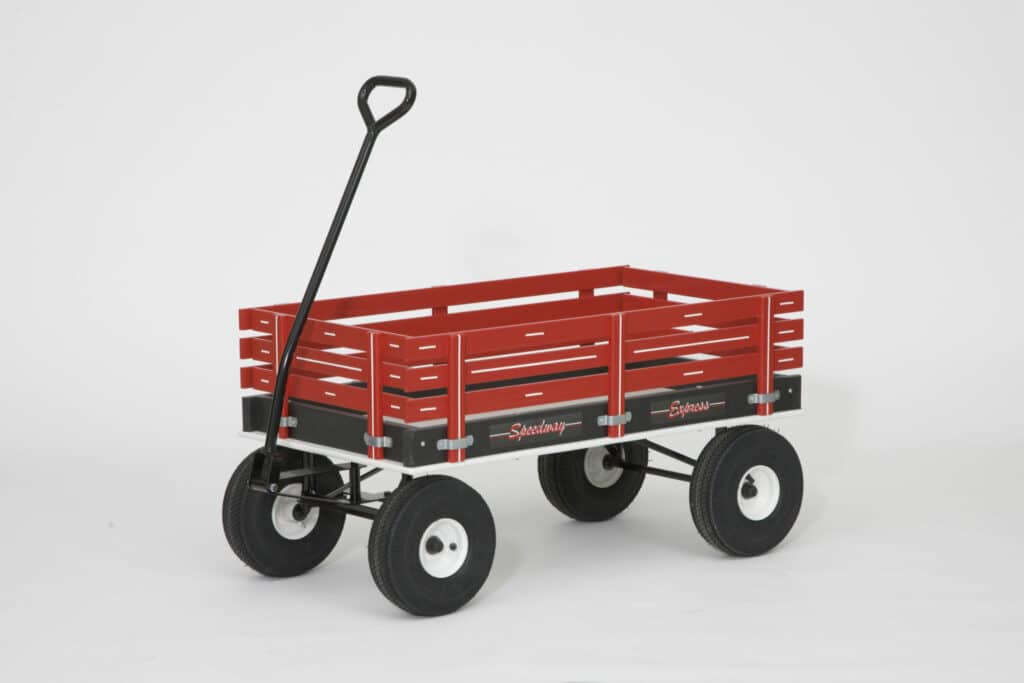
Now that we’ve been through the basics of wheel hubs and their different functions, you should be able to confidently come up with an answer the next time someone asks you, “What is a wheel hub?”
To sum it all up, a wheel hub is an essential part of the wheel that connects it to the axle and distributes the weight to the wheels. The wheel hub contains different components that help it to keep the wheel rotating smoothly and offer you a smooth and safe ride.
Now go memorize that definition of what a wheel hub is and once you have that stored in your brain, check out our selection of wagons, replacement wheels, and more! If you have questions about our replacement wheels and what makes up their hubs, get in contact with us. We’d love to help you out! If you’re not sure what size of wheel is the right fit for your wagon, we got you covered! Check out our blog post that dives into how to read tire sizes and more!
